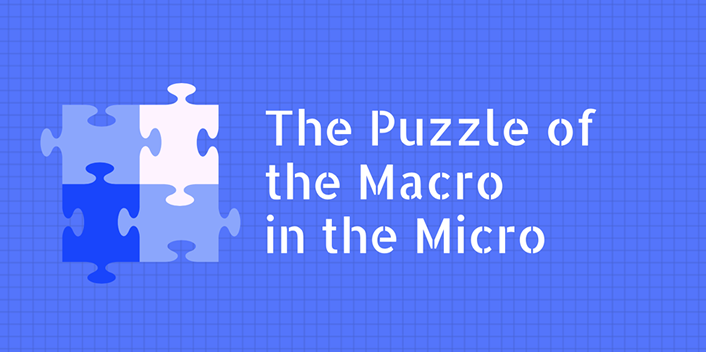
Raise your hand if you're not thinking about microcredentials.
If you just raised your hand, you're bound to be sitting at home, alone, because you're being shunned by the entire higher education innovation sector. You might consider turning back now (but it'd be great if you stuck it out 'til the end of this post).
For the rest of us who are 'geeked out' on microcredentials, it's important to remember that we're the ones who are geeked out on microcredentials — and we may not be representative of the broader higher ed community. When any of us edtech types get excited about something, it's important to first think to ourselves: #YouAreNotTheUser.
Pieces of the Puzzle
There are many parts of the puzzle of microcredentials:
- There is no common size or value from institution to institution.
- Employers are either enthusiastic about the concept or completely unengaged from the concept.
- Learners are either pursuing them individually, or unaware of them entirely.
- Their value is variable and potentially unexplainable.
Yet we've already begun innovating toward a need for smaller, chunked learning experiences. Institutions from Purdue University to Wichita State University are using digital badges as representations of smaller chunks of learning. MOOC providers are increasingly offering mini-bundles of learning experiences as microcredentials.
How do we sort it all out? Luckily, there are many great initiatives doing just that — and unfortunately, there are many initiatives doing just that.
What's Out There?
Connecting Credentials created the Beta Credentials Framework for describing competencies. It is designed to provide coherence on credential descriptions and their associated meaning, and to be used to define competencies that can be compared across credentials and institutions.
If you were wondering what happened to the Credential Transparency Initiative, it evolved into Credential Engine, which is a nonprofit charged with developing and maintaining the Credential Registry (CR) and Credential Transparency Description Language (CTDL.) The idea is that this registry allows everyone to see what a given credential means; this includes employers, job applicants, students, etc.
One might assume that this same organization maintains OBI (Open Badge Infrastructure,) which grew out of Mozilla Foundation-led, MacArthur Foundation-funded Open Badges initiative. This would be an incorrect assumption. The stewardship and continued development of that open standard moved to IMS Global Learning Consortium last year. IMS Global is an organization already dedicated to open standards in edtech. They recently released the CASE standard specification (Competency and Academic Standards Exchange), which is a standard that describes competencies for portability.
This dizzying array of initiatives, organizations, standards and frameworks may be a necessary part of the evolution of the groundwork for the portability of microcredentials. Engagement in all of these initiatives is not, however, a proxy for actual market demand or learner adoption.
#YouAreNotTheUser
Which leads me back to my previous point: we're not the users.
Most college students don't read EDUCAUSE Review, Chronicle of Higher Education or Inside HigherEd. While there are some extremely progressive applications of digital badges, their usage is highly localized. Maybe that's best for now. Maybe, for now, it's only meaningful in context.
This begs the question: who is your user? What are their specific goals? How is your institution aligning its offerings with them? For example, the ways in which microcredentials might be leveraged in an interoperable learning universe at an open access institution could be very different than one that is more research-based or selective.
If these questions are difficult to answer, there is likely a reason behind it. Is it possible that we (myself included) are acting like we are the users?
DIY U + DIFU Concierge
The portability of microcredentials ultimately depends upon their value. Their value depends upon their ability to not only represent competencies that have been actually achieved, but also accurately communicate that to another party who wants to obtain this information.
Once we have all of this messy conceptual framework and open standard bits nailed down, the application of microcredentials gets quite fun. One could imagine an intra-institutional concierge for supporting learners throughout an educational journey as they co-curate their own micro-learning experiences. Think of it as an amalgam of Do It Yourself U (something quite difficult for most individual learners to do) with a Do It For You Concierge (something that could actually scale.)
Insert Conclusion Here — When One Exists
There is not necessarily a clear path forward. There may be a moment when the factors will become more coherent and converge. The need is there, without a doubt, for relevant, smaller learning experiences. How those are credentialed, described, tracked, transported and valued is still up for grabs.
It's ok though, because figuring out messy educational challenges is kind of where we geeky edtech types thrive. For those who raised their hands at the beginning of this article — know that should you become interested in microcredentials, you can reach out to any of us anytime. Continuing the conversation and exploring ways we can meet students' needs will drive value for us all in the long run.
Sasha Thackaberry serves as assistant vice president for academic technology and new learning models at Southern New Hampshire University. Her Ph.D. is in Higher Education Administration from Kent State University, where her research centered on Competency-Based Education (CBE.)
